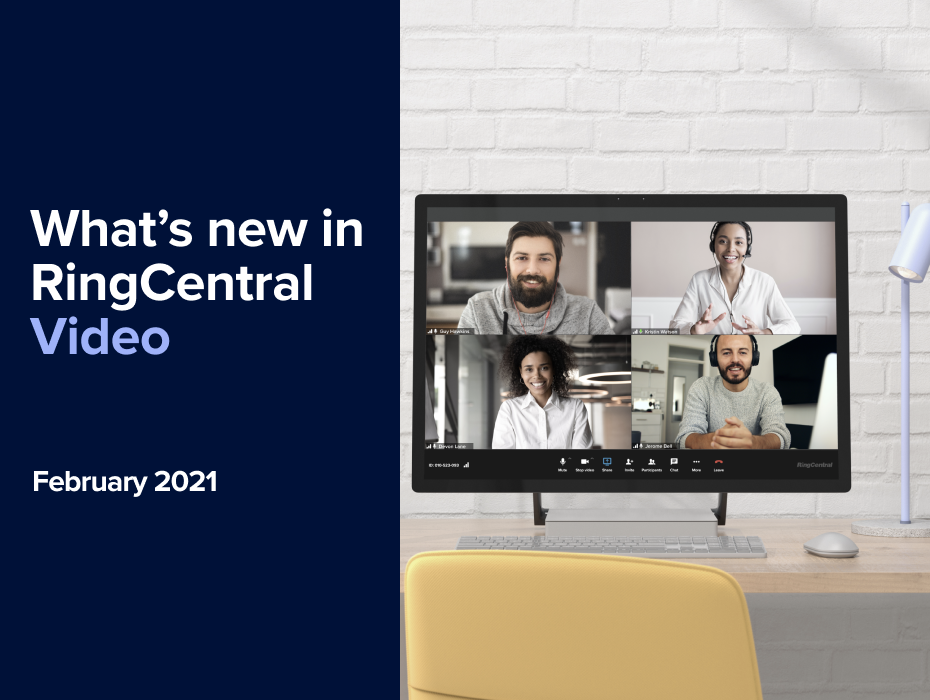Table of contents
- How are customer calls distributed to call queue agents?
- How are call queue agents selected to receive customer calls?
- How do I effectively manage customer wait time?
- What is agent availability and how is agent availability determined?
When customers reach out to your contact center, they expect the highest levels of customer service. In fact, more than 88% of people consider the customer service experience an important part of their purchasing decision.
That’s why improving the customer experience is critical to every business today, especially when it comes to call queuing. Customers want their calls directed to the right call center agents at the right times. In response, companies look for VoIP business phone system solutions that have the right call queue features and functionality to provide better customer experiences while reducing call abandonment.
Call queues, also known as Automatic Call Distribution (ACD), answer incoming calls and distribute them to employees in your organization who can help resolve an issue or answer a question.
How are customer calls distributed to call queue agents?
Customer calls are distributed to available agents using a “first-in, first-out” approach. The first call received is the first call connected to a call queue agent. When more than one agent is available, the agent selection method determines who will receive the call.
How are call queue agents selected to receive customer calls?
There are three call routing distribution options:
- Rotating
- Sequential
- Simultaneous
So how does each distribution work?
1. Rotating
Also known as “most idle agent” or “round-robin,” a rotating agent selection is the most efficient way to manage high call volumes, reduce wait times and call abandonment, and share the call queue workload. Multiple inbound calls are distributed concurrently to the longest-idle, least-busy agents.
Idle time begins when the call queue agent is not connected. Idle time resets when any of the agent’s endpoints rings or is connected. Agents who miss calls, are busy, or whose statuses are set to “Do not disturb” or “Do not accept queue calls” are skipped.
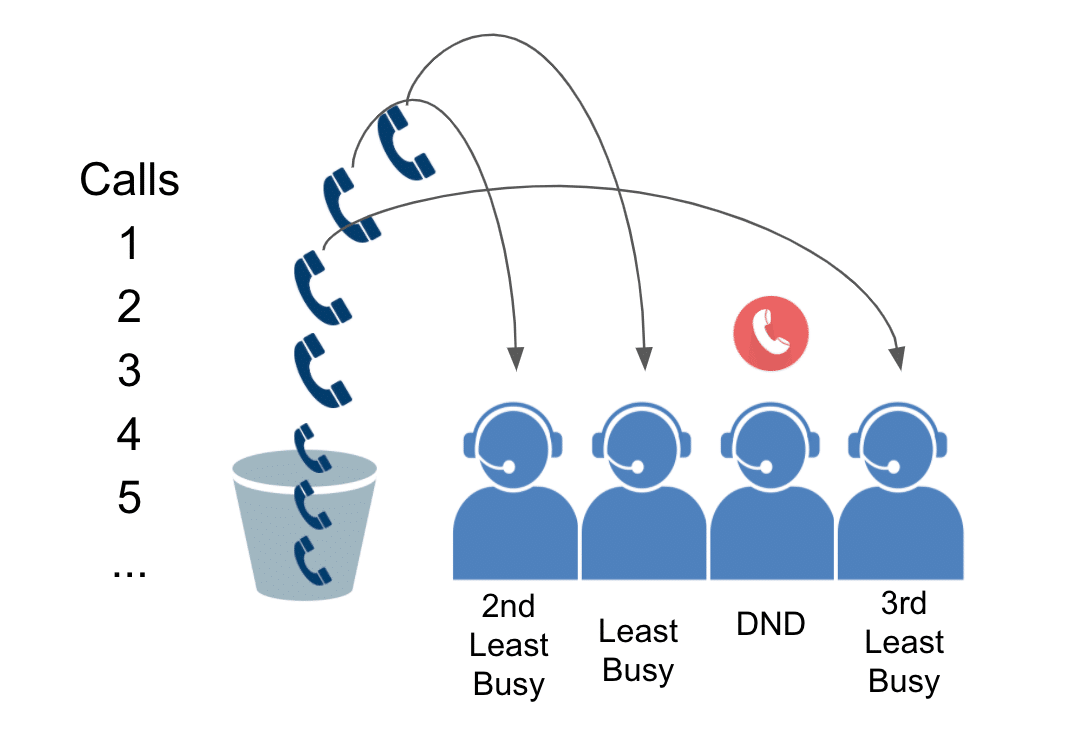
Figure 1: Rotating Call Distribution
2. Sequential
Also known as top-down, sequential agent selection distributes calls to the agent who is best skilled to answer the call and is frequently used when training new agents. Call queue agents are always selected in the order configured, so the most-skilled agents are typically configured first while new agents in training are configured toward the bottom of the list.
Multiple calls are distributed concurrently to available agents in the order configured. Agents who miss calls, are busy, or whose statuses are set to “Do not disturb” or “Do not accept queue calls” are skipped. When the list of agents is exhausted, it starts over from the beginning.
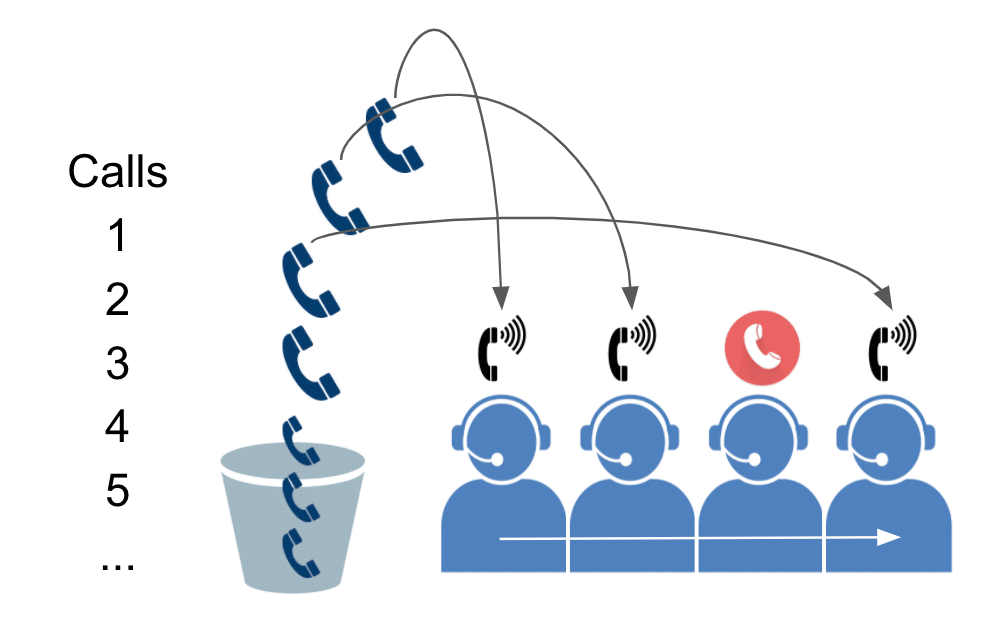
Figure 2: Sequential Call Distribution
3. Simultaneous
Simultaneous agent selection distributes calls one-at-a-time to all available agents. The call rings until answered or maximum wait time expires.
Simultaneous agent selection alerts the greatest number of agents per call, but it is the slowest distribution method since calls are distributed one-at-a-time vs multiple concurrently, and is frequently used when answering calls is a secondary responsibility for the agent.
Agents who miss calls, are busy or whose statuses are set to “Do not disturb” or “Do not accept queue calls” are skipped.
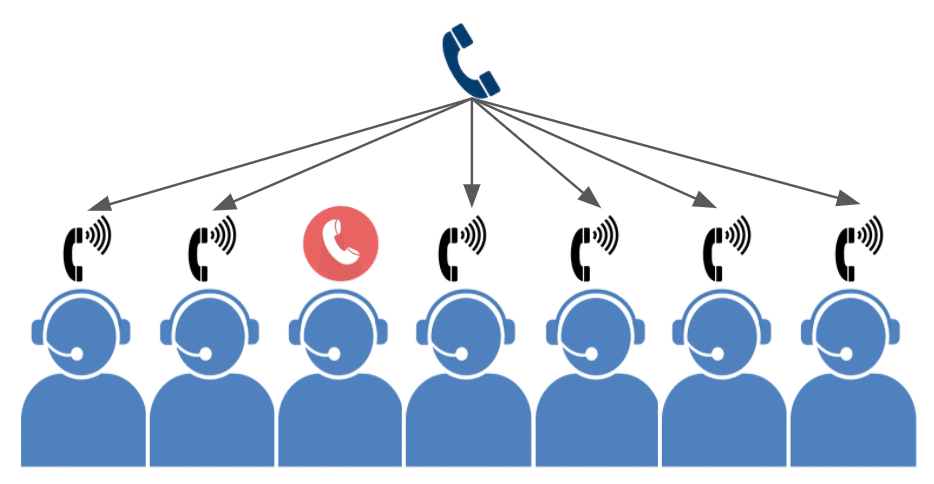
Figure 3: Simultaneous Call Distribution
For all distributions when agents are not available, calls are given hold music until the next available agent answers the call. When the queue is full and/or after a configurable wait time, calls may be asked by an interactive voice response (IVR) application which option they prefer “press 1 to continue waiting, press 2 to leave a voicemail for a callback.” Alternatively, calls may be routed to a backup call queue, an external phone number (e.g. third-party answering service), or voicemail.
⭐ Take your contact center to a whole new level ⭐
Next-Gen Cloud Contact Centers for Dummies®, RingCentral Special Edition eBook
How do I effectively manage customer hold or queue times?
Technology has changed today’s customer service expectations. Typical customers are accustomed to instant gratification experiences that make waiting on hold frustrating.
But don’t worry. Here are a few useful ways to manage your wait times:
1. Create a pleasant wait experience
Customers call when they’re typically unsatisfied with something, so the last thing they want to hear is a simple beep while waiting for the next available agent. Keep the customer entertained by playing greetings and hold music that match the demographics of the caller. Upload your own audio files rather than using the default options.
For example, if your average caller is under 30, consider pop hold music. Match the tonality of greetings too. Younger customers may prefer a more ‘hip’ version of “your call will be answered by the next available agent” such as “relax, we’ll be with you real soon.”
2. Communicate updates regularly
Keep the customer informed by playing a periodic greeting so they know they haven’t lost their place in line. Include announcements, offers, and product tips to keep callers engaged while they wait.
3. Offer self-service options
Many customers want to feel empowered to resolve their own issues. While waiting for the next available agent, let callers know about any alternative tools they can use instead of waiting. Many companies connect their customer relationship management (CRM) system to an interactive voice response (IVR) application to provide callers with self-service options.
4. Improve customer & agent interactions
Monitor agent performance to find ways to improve customer-agent interactions. Create call recordings that capture the most frequently asked questions or reported issues. Are agents able to find the content needed to address the most popular topics quickly? Are self-service options available?
5. Know when to route customer calls to alternate destinations
Call abandonment means the caller disconnects before reaching an agent. Call center reports provide real-time and historical service level data to help determine when callers stop waiting and hang-up. Is it after a specific amount of time? When more than a specific number of calls are waiting? Many call center experts recommend an initial service level target as, “…answer 90% of sales calls within 10 seconds and 80% of support calls within 20 seconds.”
Whatever your service level, configure call routing so callers are sent to alternate destinations before they hang up. Abandoned calls can be costly for small businesses and enterprises alike. When call volumes are high, you might choose to route calls to an auto attendant, answering service, or a backup call queue with more available agents.
When neither option is available, sending the caller to a voicemail box or other messaging solution is a good last attempt at capturing the contact before they hang up. Agents can callback the customer from their deskphone as soon as they’re available.
What is Availability? How does Availability affect hold time?
In RingCentral, agents have the ability to set their status as Available, Invisible, or Do Not Disturb. When set to Available or Invisible, agents will receive extension and external calls. When set to Do Not Disturb, incoming calls are routed to a voicemail box (if enabled).

Figure 4: User Status Options
When a call queue agent’s status is set to Available or Invisible, an additional “Accept Queue Calls On/Off” indicator will be displayed.

Figure 5: Call Queue Agent Status Options
When an agent is ready to answer calls from the queue, they should set the Accept Queue Calls status to ‘On’.
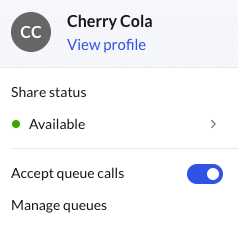
Figure 6: Agent is accepting calls from the queue
When agents are on break or leave for the day, they should set Accept Queue Calls to “Off”, so they do not receive call queue calls while away from their desk.
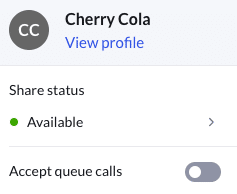
Figure 7: Agent is not accepting calls from the queue
When an agent is set to accept queue calls, each call will ring the agent for the amount of time configured in the “Number of rings before trying the next member” setting. If the agent does not answer, the call is offered to the next available agent.
If an agent accidentally forgets to change their Accept Queue Calls status to “Off”, calls will continue to ring the agent resulting in longer wait times and may increase call abandonment. The call queue administrator/manager may remotely change an agent’s status by logging into the Administration or Call Queue Management portal.

Figure 8: Call queue administrator/manager turns Member Status Off so call queue calls stop ringing agent
Can a call queue manager set agent availability for individual call queues? Yes.
A quick way to respond to increased call volumes and wait times is to have additional agents configured; ready to help answer calls when the call queue gets busy. Each agent has two status controls:
- Member Status: This indicates when an agent is available to answer call queue calls.
- Queue Status: This determines which call queue calls are offered to the agent.
In Figure 9, the agent is available to answer calls from the Home Sales call queue; but not the Apartment Sales call queue.

Figure 9: Queue Status determines which call queue calls are offered to the agent
If the wait time for Apartment Sales call queue increases unexpectedly, the call queue administrator/manager can log into the portal and quickly make the agent available by changing the agent’s Queue Status to “On”.
Can an agent set their own individual call queue availability? Yes.
In some environments, call queue administrators/managers may empower agents to set their own individual call queue availability.

Figure 10: Managers can enable agents to set their own individual Queue Status

Figure 11: Agents can set their own individual Queue Status in desktop/mobile applications
Delivering a better customer experience
Putting your customers on hold makes for a poor experience, but with the right VoIP phone system and call queue setup, your business is well-positioned to deliver the best customer service experience it can.
Originally published Mar 09, 2021, updated Jul 25, 2024





